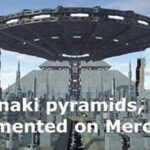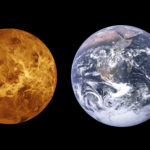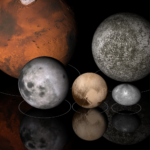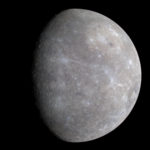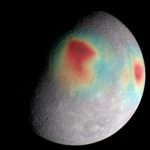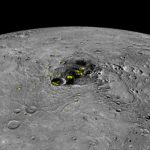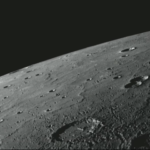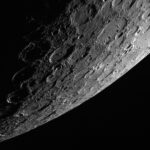This is the Sun‘s nearest orbiting world.
–
Table of Contents:
- Introduction
- Spec’s
- Additional Notes
- History
- Maps, Info, & Claims
- Comparisons
- High Orbit
- Low Orbit
–
Introduction:
Populated with many temperate areas in and on the surface, Mercury isn’t what it seems from afar. This tiny planet still has a magnetosphere and a hint of gravity (though not enough to keep an atmosphere), as well as water and ice, a crust and mantle, maybe even a hollow core (once you get through its thick iron). Gravity differences detected from orbit indicate different mass groupings beneath the surface, planetary evolution, and possible civilizations. Its cratered surface has never known wind or water, and so is a glimpse of the ultra-ancient past, essentially frozen in time, showing us the heavy bombardment (or connection via interplanetary energy bolts/rivers; mega-lightning) of worlds since their formation billions of years ago.
–
Planet Info:
Mercury is the closest planet to the Sun that that public knows of. Like the Moon, it could very well be an artificial satellite, made and placed there for reasons yet undiscovered.
Designations
Pronunciation/ˈmɜːrkjʊri/ (![]() listen)
listen)
Adjectives Mercurian,[12] mercurial[13]
- 0.466 697 AU
- 69,816,900 km
- 0.307 499 AU
- 46,001,200 km
- 0.387 098 AU
- 57,909,050 km
Eccentricity 0.205 630[2]
- 7.005° to ecliptic
- 3.38° to Sun‘s equator
- 6.34° to invariable plane[3]
Satellites None
Physical characteristics
- 7.48×107 km2[4]
- 0.147 Earths
- 6.083×1010 km3[4]
- 0.056 Earths
- 3.3011×1023 kg[6]
- 0.055 Earths
- 58.646 d
- 1407.5 h[4]
- 18h 44m 2s
- 281.01°[2]
| Surface temp. | min | mean | max |
|---|---|---|---|
| 0°N, 0°W [11] | 100 K | 340 K | 700 K |
| 85°N, 0°W[11] | 80 K | 200 K | 380 K |
Further details here.
Mercury has a deep crater at both of its poles, and this is where much of its water lies frozen, likely sealing off the state-sized holes down into its core, just as we have found to be the case on other worlds.
–
Additional Notes:
Billions of tons of water are on this world, as well as more air than Earth (though not on its outer surface).
Habitable regions are near its poles and inside.
Untold millions call Mercury home.
–
History:
estimated to have formed 4,500,000,000 Earth-years before the 21st century, A.D.
more TBA
c.50,000,000 AD: (Lovecraft timeline) Following the final end of humanity on Earth (as it is known in the 26th Xian century), a new race of beetle-like insects arises. These are possessed by the Great Race of Yith, leaving their previous home on a planet orbiting a dark star near Taurus. Eventually, even the beetles die out, and the Yithians send their collective minds into a vegetable species living on Mercury.
–
Maps, Info, & Claims:
–
Comparisons:
–
High Orbit:
–
Low Orbit:
–


